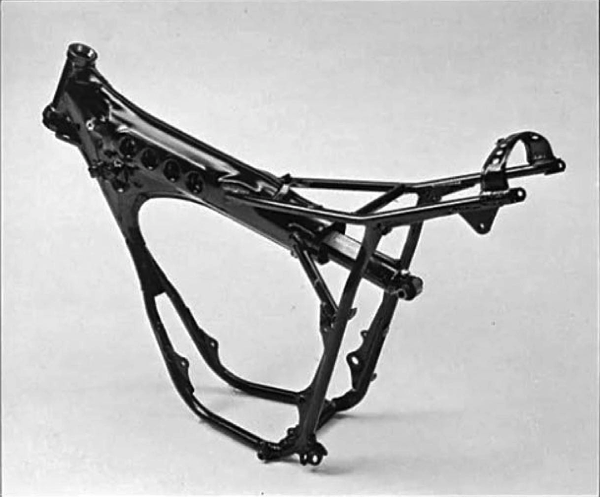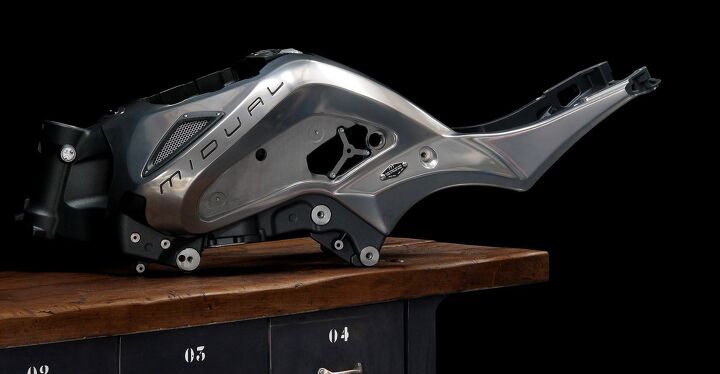Different types of motorcycle chassis
#motorcycles #bikes #chassis #ktm #typesof frames . A motorcycle’s chassis or frame forms its skeleton. All the components of a motorcycle, like the suspension, wheels, fuel tank, seats, handlebars etc, are attached to this base structure which lends a motorcycle its strength and ability to handle well. Motorcycle frames come in a variety of materials and shapes, based on the budgetary and performance-related limits of the end product.


#motorcycles #bikes #chassis #ktm #typesof frames . A motorcycle’s chassis or frame forms its skeleton. All the components of a motorcycle, like the suspension, wheels, fuel tank, seats, handlebars etc, are attached to this base structure which lends a motorcycle its strength and ability to handle well. Motorcycle frames come in a variety of materials and shapes, based on the budgetary and performance-related limits of the end product.
>>Materials used for making chassis
The very important aspect of a motorcycle frame’s cost and its capability is the material that it’s made of. Mainly for budget oriented motorcycles, frames are made of steel tubes and are bent or welded together to suit a specific chassis requirement. While steel is cost-effective, reasonably strong and very suitable for motorcycles with low to moderate performance requirements, modern motorcycles require their chassis to be stiffer, more lightweight and look better than steel tubes could offer. Modern motorcycles make use of materials such as aluminium and alloys to achieve the target.
For high-performance sports bikes which require even lighter and stiffer materials, motorcycle frames are made of exotic, expensive materials such as carbon fibre, magnesium and titanium. Modern production techniques also make use of composites made of these materials, as well as newer materials which are even more expensive. While such expensive materials do have a great role to play in enhancing the performance of extreme racing machines.
>>Different types of chassis
*Backbone frame.

This is one of the most basic and cost-effective varieties of motorcycle frames. As the name suggests, this one is like a spine, and to put things in perspective, not a full-fledged skeleton to hold different components of the bike in place. The amount of steel used is lesser as compared to other frame types, and that makes the construction of this variety of frames very cost effective. The engine is bolted on to the backbone frame, and it usually hangs off it – not cradled, or participating as a stressed member. While backbone frame is economical to produce – it doesn’t have very good strength or torsional rigidity. It’s suitable for low-cost economical motorcycles, propelled by a low capacity engine.
*Single cradle frame.

Basic, simple and cost-effective frame type - It comprises steel tubes of various diameters and strength ratings welded together to form a structure that holds together the various components of a motorcycle.
Single cradle frames are also often referred to as single downtube frames. Whether it’s a cradle type frame or not is ascertained by whether the engine on the motorcycle is a stressed member or not. In some cases, the engine acts as a member of a chassis and bears the stress, in some other cases, it doesn’t. A single downtube chassis, in most cases, would specify if the engine is a stressed member of the chassis or not.
*Double cradle frame.


While a single cradle frame has one steel tube going down to support the engine, a double cradle frame has two tubes going down to cradle it. A double-cradle or double-downtube chassis has a significant advantage over its single downtube counterparts in terms of strength and rigidity, though they don’t cost very high as compared to single cradle frames. While this variety of frames are used in abundance in the Indian context and are well suited to offer strength and rigidity in a cost-conscious market like India, they are still not the best suited for performance and are a rather old design.
*Perimeter frame.


When it comes to one of the most commonly used frame types among performance sports bikes, the perimeter frame, also known as Twin Spar frame has to be one of the most popular choices. This frame type is based on research from motorcycle racing that suggests that a bike’s rigidity is improved significantly if you join its steering head to the swing-arm in the shortest distance possible. Of course, the beams which join the steering head with the swing-arm have to be adequately stiff, and the lighter they are, without compromising stiffness. The two beams or the twin spars after which the frame is named surround the engine as they reach out for the swing-arm pivot. While earlier twin-spar frames were made of steel, almost all modern twin spar frames are made of lightweight aluminium.
*Trellis frame.


The Trellis frame is similar in its basic concept to the perimeter frame. This frame’s primary objective, too, is to connect the steering head with the swing-arm as directly as possible. The primary difference is the way the two beams emanating from the steering head are constructed. Unlike the perimeter frame which utilizes aluminium beams, trellis frame uses a bunch of short sized steel or aluminium tubes welded together to form a trellis-like structure. So while the concept remains the same, trellis frame, in most cases manages to ace the perimeter frame in terms of rigidity, and light construction. Another great advantage of trellis frame is that it’s relatively much simpler to create, and doesn’t require heavy machinery for its construction. Despite its simplicity, it’s very effective and is the frame of bike makers.
eg; KTM duke
eg; KTM duke
*Monocoque frame.


Monocoque frames are typically used in cars – they’re built in highly robotized, capital-intensive plants, and are generally more expensive to make unless you have an enormous economy of scale. However, for certain extreme motorcycles, the entire skeletal structure is finished as a single, super-stiff piece of metal, and is termed as a monocoque frame. Such frames are not very commonly seen, are used only for machines which have extreme power, and demand an uncompromising torsional rigidity along with lightweight construction. Apart from their complex construction and a high degree of precision, such frames also very often make use of exotic materials such as carbon-fibre and magnesium and thus, are very expensive as compared to other popular frame types.

Comments
Post a Comment